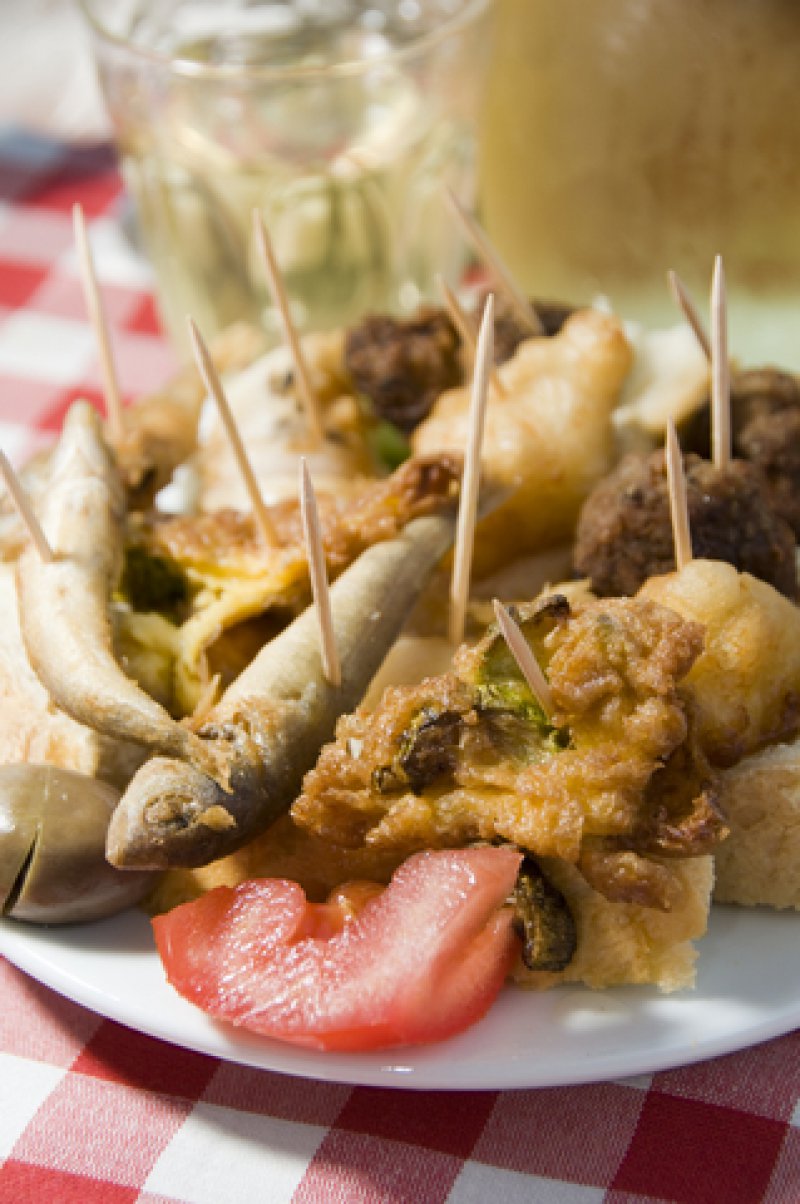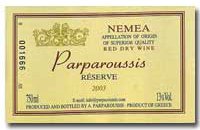Although the tradition of sharing a plethora of small dishes is one that every Mediterranean country has in common, these small plates go by several names: meze and mezze, in Greece and the Eastern Mediterranean; antipasti in Italy; tapas in Spain. The idea of sharing food and drink with friends in an unrushed, unhurried environment is a common motif throughout Mediterranean culture.
The meze dining experience is one with ancient roots. In antiquity, small plates were served forth in banquet halls and shared by all. The word itself means "middle", as in middle of the day, or between meals, because the meze table traditionally was not meant to be a full meal. Rather, it was something that fell in the middle of the day or before dinner. That has changed today though.
There are meze restaurants all over Greece, tapas bars all over Spain, and other such places all over the Mediterranean, where the selection of small plates is enormous. It is not uncommon to share 10 or 15 dishes over the course of a meal. The small-plate trend is gaining ground in fine dining establishments in Greece, as well; many of Athens’ top restaurants offer tasting menus redolent of small dishes. Abroad, especially on the east coast of the United States, the meze tradition is rapidly gaining ground- as can by seen by the increasing numbers of such eateries.
On traditional tables, bread and alcohol- whether ouzo, raki, wine, beer or something else- would almost always accompany these small plates. Given that breads and pittes play such a large role on the Mediterranean table, mezethes that could accompany such staples are a major part of the meze tradition. Dips, spreads, and salsa-type dishes, in other words, make up a large portion of the Mediterranean’s small plates. Such specialities are usually savory and pungent, with robust, distinct flavors.
The term "meze" brings to mind something mouth-watering, something you have tasted before, but have not forgotten. It is food you savor at the seaside, under the bright sun or before dinner after long hours of swimming. The word also connotes variety, since you can’t help but cooking or ordering more than one meze –one is never enough, neither in taste nor in quantity.
In Greece as well as the rest of the Mediterranean, charcuterie is an important meze, or tapas, or antipasto. Myriad variations of cured meats abound in the region. In the eastern Mediterranean, especially in Greece, cured fish is also very popular. Because of its saltiness it makes for the perfect accompaniment to robust spirits.
Variety is another important aspect of the meze tradition. The array of different dishes presented on the meze table must be compromised of a variety of textures, temperatures and flavors. There is a whole array of fried foods that Greeks savor as mezethes, thus satisfying the need for something crisp. The plethora of dips and tapenades satisfy the need for robust flavors.
The hand-held morsels, such as cheese-filled phyllo triangles (tiropites) and small meatballs (souzoukakia), foster a relaxed environment where eating literally with one’s hands –finger food- is socially acceptable.
Lastly, seafood makes up a huge array of mezethes, because Greeks, like all Mediterranean people, love the fruit of their beloved sea. In Greece, one is likely to find appetizers such as spicy mussels in cheese sauce, deep-fried squid, or grilled shrimp on the meze table. He will mostly likely wash down such delicacies with a milky, anise-flavored glass of ouzo- a signature Greek drink.
The most important thing to remember about the meze tradition is that it goes hand-in-hand with the Mediterranean lifestyle. Foods are meant to be savored and shared in a friendly, relaxed atmosphere amongst friends and family.


































































